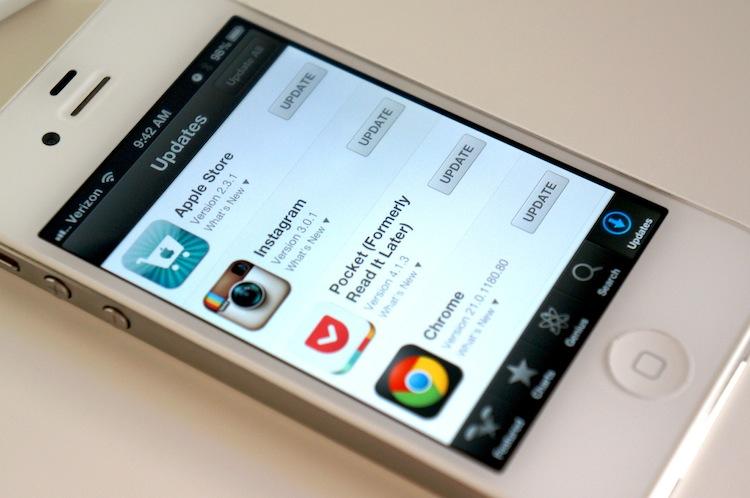
As a quick preface, I want to clarify that application updates are usually a good thing. Software updates of any type can and will fix bugs, make the software more stable, add new features and, most importantly, improve overall user experience. Most of the time, I am happy to receive updates, especially those bearing new functionality or a redesigned (improved) interface.
Of course, not every update is noteworthy and not every update is for the better. Some are better off never happening in the first place, like a recent Google Maps update that completely obliterated my One X battery for two days.
Unlike my BlackBerry days, I now rely on a fairly significant number of applications to get by with mobile devices. I currently have 151 total applications (counting pre-installed) in my iPad, 85 total applications on my HTC One X and 84 on my iPhone 4S. Of those apps, a good portion of them – 30 or more – get used regularly. Others are very niche applications I keep around, just in case.
Because of this, however, I wake up almost every morning with countless application updates. I will have some updates on my iPhone, the same plus some others on my iPad and then a totally different set of updates on the One X. Generally, when I see an update is available, I hit the update button without hesitation. And by the time if finally begin to walk towards my bed, I will get another notification telling me there are more updates available.
Initially, you might think that this is just a side-effect of having so many applications installed on my mobile devices. And your argument would be partially correct. There are a lot of different applications that are regularly being updated, every few months or so. But there are those select few that are updated what seems like every couple days.
I have to hand it to the developers. That's some serious dedication. It's impressive and I send out some very heartfelt kudos. That said, not every little change needs to be pushed to end users.
Developers, you're killing my data. And my patience. If I switch phones for a day or two, app updates will begin to pile up. Last weekend, I switched to my Galaxy Nexus because the One X was going haywire. After just a week of being inactive, the Nexus was due for 26 updates. That's absurd and unfortunately reminiscent of the painstakingly endless, nagging Windows updates.
I couldn't be more grateful for Smart App Updates, which Google rolled out last month. Instead of downloading the entire application again for each update, Smart App Updates allows users to only download what has changed in the source code, significantly reducing application update sizes. This definitely helps, but only so much. And even though I perform the vast majority of updates on Wi-Fi now, I have used upwards of 400MB in the last few weeks on the One X solely for Android application updates. For many 400MB is a rather significant amount of data, especially for no real usage on their part.
Some developers, however, are very dedicated and are also perfectionists. They'll push an update, notice a tiny detail missing and push another. And another. And another.
The answer to ever-increasing number of application updates lies initially in the developers themselves consolidating the number of updates they publish. (Fewer, larger updates are almost always better … for everyone.) Developers need to prioritize updates. Obviously, bug fixes are top priority, they should be pushed fairly regularly. But only important fixes should be pushed alone. Small, barely noticeable issues should all be fixed in one big batch, or they should be bundled with a major update.
A better solution, though, may lie in the providers of the application catalogs themselves, Google, Apple and Microsoft. Both for the end users' sake and to better control server bandwidth, they could limit the number of updates for a specific application a developer can push each month to, say, two, forcing devs to make sure they get it right the first time and stop incessant, incremental updates. Critical bug fixes that need to be made after the second update could simply be submitted for review. If necessary, the update could be allowed. For something that can wait, the developer can cancel the update or have it push automatically come the beginning of the next month.
I can't be the only person having nightmares of Android and iOS turning into Windows Vista with all the updating that is constantly going on. Tell me, readers. Is Google or Apple limiting the number of updates a developer can publish the answer? Developers, chime in if you're in the audience. And fellow users, do you have a problem with an enormous, constant inflow of app updates?